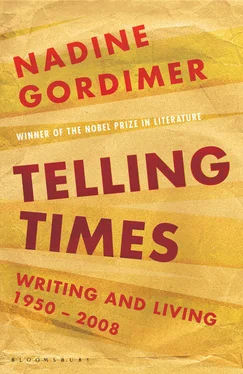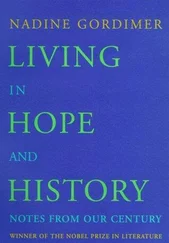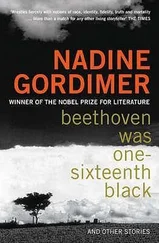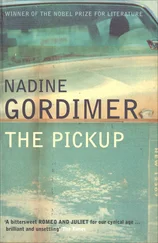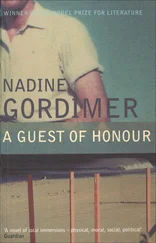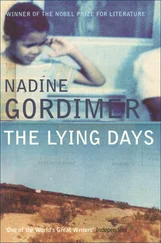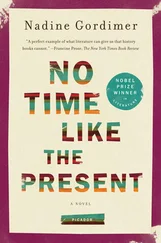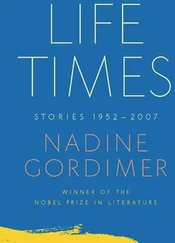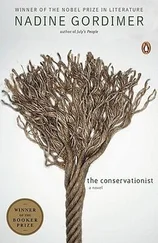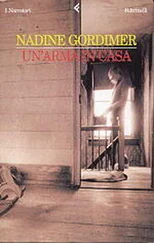Perhaps that may be regarded as a rather special area of race relations, far from ‘Sorry, maGogo’ in the street. In between, I reflect on my feelings when, moving about the city and suburbs, I pass a school at the hour when classes end. It was a whites-only school I knew well. I see the kids coming out, the small boys scuffling with one another, the little girls tangling hands and giggling together. They are all shades of colour — South African black, South African Indian, South African mélange , South African white. They are growing up with a common initiating experience, into life. They will never be subject to the unspeakable horrors that the Truth and Reconciliation Commission has exposed to us, and that have been so vital for us to face, what we did or what we allowed to happen. These children are not being kept apart to learn to hate, to fear the unknown, the untouched in one another.
One of the generation that was the victim of the horrors of apartheid, Tokyo Sexwale, lately Premier of Gauteng, of which Johannesburg is the capital, and now a black-empowerment crusader married to a white woman, said something this month that could be our rubric to live by: ‘If blacks get hurt, I get hurt. If whites get hurt, that’s my wife, and if you harm coloured people, you’re looking for my children. Your unity embodies who I am.’
1999
Hemingway’s Expatriates: A Way of Looking at the World
There is surely no writer in the English-speaking world, born in the generations after Ernest Hemingway, who does not share this centennial celebration through having been influenced in some way by his work. I am of the first generation after his. On another continent, I grew up against a similar small-town background. The Middle West, USA, and a gold-mining town in South Africa shared something beyond their backwoods limitations: mine shallowly occupied by whites as opposed to indigenous Africans, his shallowly occupied by whites as opposed to indigenous American Indians, although in his environment the Indians were perhaps a ghostly rather than a material presence, and in mine the Africans were very much alive, a majority left out in colonialism’s double book-keeping of who counted.
Both twentieth-century environments were at ‘the ragged edge of a newly formed and still forming cultural universe’; 97from there, he and I went different ways, I to enter through moving deeper into the reality of my own country, he through seeking reality in the moveable feast of the world outside.
But in the craft with which I provisioned myself as a writer there were certain skills I learned from him and am grateful for, along with the invaluable workshop handed on by Chekhov, D. H. Lawrence and Eudora Welty. I am speaking of the writing of short stories specifically, and I am not referring, as every writer knows, to the amateur’s process of imitation. What a beginning writer learns from a master (of either sex) is the range of the imagination working upon life — what literature can go after, what is missed by those who do not have what Chinua Achebe has noted as the invisible ring around the eye that marks the writer.
From Ernest Hemingway’s stories I learned to listen, within myself, when writing, for what went unsaid by my characters; what can be, must be conveyed in other ways, and not alone by body-language but also in the breathing spaces of syntax: the necessity to create silences which the reader can interpret from these signs. Hermeneutics doesn’t belong in the locked cupboards of academic circles: it’s part of the illumination and pleasure of the reader, and Hemingway knew superbly how to bring it about. There is also, I believe, a misperception about his dialogue — it is not realistic but aphoristic, and there Beckett and Pinter are ones who came after and are a presence at the centennial.
Something else I learned to consider — judiciously — for myself, from Hemingway, was the use of repetition: we need to coin another term to honour him, conveying repetition transformed in his hand as a special term for emphasis; used well, repetition becomes the Beethoven note, a knell laden with resonant meaning. Of course, like most of us fallible writers, even Hemingway, who used it with perfect timing, overdid it sometimes, parodying one of his own strengths.
Then there is the power of the deliberate non sequitur. ‘And we went up into the town to the Plaza and those were the last people who were shot in the village.’ This is a quote from a novel, For Whom The Bell Tolls , but I would say it was learned from the way of telling Hemingway taught himself with the stories (I avoid the word ‘technique’ because writing is organic, it cannot be learned as a technique.)
A short story succeeds, if it does, as a series or play of echoes. Its marvellously rigorous discipline does not allow for explanation, whether authorial or disguised through a protagonist. Beginning with the conjunction, the echoes in this non-sequitur sentence of Hemingway’s text sound back and forth through everything that has happened in the novel: the blessed banal continuity — and the horror of it — that life goes on with violence as something that can be measured in acceptance — they were the sum of it, the ‘last people’ to be shot — along with the daily round, up at the Plaza. The devastating reflection of how people are, what circumstances make of them, what they consent to become: all this is there. Tight-lipped? On the contrary, an oracle sounding back and forth.
In the novels, Hemingway indulged luxuriantly in the soliloquy, particularly in For Whom The Bell Tolls , recycled from the authorial interventions of nineteenth-century novelists. To overhear what is going on in the head of Robert Jordan as a subtext to what we are experiencing with him, through him — and he is a character who buttonholes you like the Ancient Mariner and you don’t want to break free — is no contrivance. But the many pages of Pilar recounting, with dialogue formal between quotes, etc., the flailing of the fascists in a village, is a contrived set-piece from which a young aspiring writer such as I was would do best not to learn. Hemingway does it dazzlingly; but it is Hemingway , not Pilar, speaking. And he knows it; he gets round it by having Robert Jordan reflect: ‘If that woman could only write … He would try to write it and if he had luck and could remember it perhaps he could get it down as she told it.’ Hemingway tried, and didn’t, because Pilar couldn’t possibly have remembered and reconstructed the experience in the imaginatively ordered way he allowed himself to present it.
That Hemingway, indeed, didn’t let Pilar tell it in her own idiom — the one he created for her throughout the rest of the novel — is an aside pertinent to a general question. At one time in the volatile attention of socio-literary criticism there was much discussion about Ernest Hemingway’s decisions in writing direct speech as translation from another language. We are not talking of the task of an interpreter sitting up in a box at a conference. We are talking of the liberties a writer may or may not take in inventing — no less — a language that is neither the original nor an English equivalent, since this last is impossible. The intention is to convey the mode of expression, the musical beat, the harmony and dissonance, the states of mind that are the integument of the language’s ancient formation.
The first consideration must be how well does the writer know the original language? And my premise must be that Hemingway the linguist knew Spanish very well. It was the tongue of one of his two love affairs with the world outside his own — the other love affair I shall come to later.
Читать дальше
